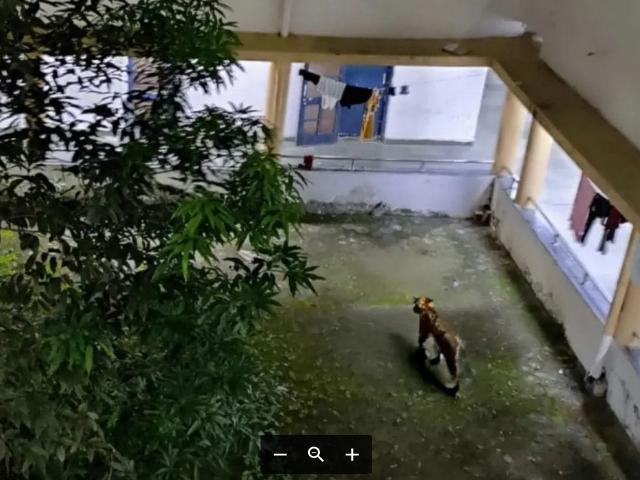Two sub- adult tigers, now more than 24 months’ of age, seem to have started exploring the city of Bhopal. On October 3 night, one of them explored the sprawling campus of a regional engineering college located on a hillock in Bhopal. The tiger sighting led to panic. In the adjoining hostels, students were advised to stay indoors. For the last over a year or so, these tigers have already been accompanying their mother as the trio roam the city outskirts. Termed as urban tigers by the state forest department, there are as many as six resident tigers of Bhopal. In all there are 18 tigers moving about in a forest corridor near Bhopal and one third of them are now city residents – born and brought up in the jungles near Bhopal. There seems to be no action plan with the government which apparently awaits some major man-animal conflict in the tiger movement area.
Exploring New Territory
Now the forest department has placed a cage to trap the tiger in the green patch near the hostels of MANIT or the Maulana Azad National Institute of Technology. The big cat was sighted near the sports ground and the college hostels . The tiger also mauled cattles in the college premises. The students panicked and soon the tiger sighting details started circulating in the college whatsApp groups. Next day the forest department personnel reached the college premises and started a search operation. Camera traps were installed and a trap with bait was also placed to catch the cat. The tiger sighting was also taking place regularly in the sprawling premises of WALMI ((Water and Land Management Institute). One of these two tigers seems to have settled down in the woods of WALMI which also have food ( herbivores) and water availability .There is a small forest corridor connecting the hillock of WALMI and MANIT located about 1 km from each other.
Also read: Bhopal's Urban Tigers Need Tiger Reserve Not Chain-Links Mr Chief Minister
Earlier this year, tiger movement was also reported in Bhoj University campus with a patch of lush green tree cover . Almost in the same location on the city outskirts popularly known as Kerwa region, students of National Law Academy located, its faculty, residents of the area, owners of the food joints and employees and officials of the Artificial Insemination Training Institute in the same locality have often seen tigers while travelling from one place to other. There are a number of schools and colleges in the region. The government has put up sign boards with caution “Beware, tiger movement area.” The tiger movement is taking place in a large contiguous area spread over 22 square kms in the jungles around two dams- Kerwa and Kaliyasot and WALMI located on a hill close to Kaliyasot dam. WALMI campus alone is spread over 200 acres of forest area on the right bank of Kaiyasot. MANIT seems to be the new stopover for the big cats.
No Action Plan With Govt
Those monitoring the tigers said that two sub-adult cubs (T1231, T1233) have started detaching from their mother (T123). “They are exploring the city, maybe marking their territory as they grow,” they said. And we need to know the other places where they may have visited in the past, a department official said. “We only learn about their presence only after their sighting. But we are unaware of their movement in other city areas which is why radio collaring is required”, said another. The chain linking has fenced a large 22 km area restricting the tiger movement. Now the WALMI management has shown interest in “ fencing 200 acres compound of the institute”, sources said. If this is done, the tiger movement will be further restricted and may lead to their movement in the neighbouring densely populated colonies and it may lead to some conflict. Those who have been following these tigers also claim, “There is a change in their behavior. Like national park tigers, these big cats also don’t mind the presence of humans which is dangerous. In the tiger reserves, tourists are safe inside a Gypsy.”
Also read: It's Time to Radio Collar Urban Tigers of Bhopal
So what is the way out? The state forest department is mulling over translocating T123, the breeding tigress and mother of the two sub-adults to Madhav national park where a tiger safari is being planned . But, experts believe, she may be replaced by another big cat. There is a movement of as many as 18 tigers on the city outskirts , originally belonging to the 60 plus tiger population of Ratapani sanctuary, awaiting a notification of tiger reserve from the state forest department. But the state government has been sitting over this pending issue for the past over a decade. There seems to be no action plan with the government to handle the big cats for which a strong political will is required.





Comments
Post a Comment